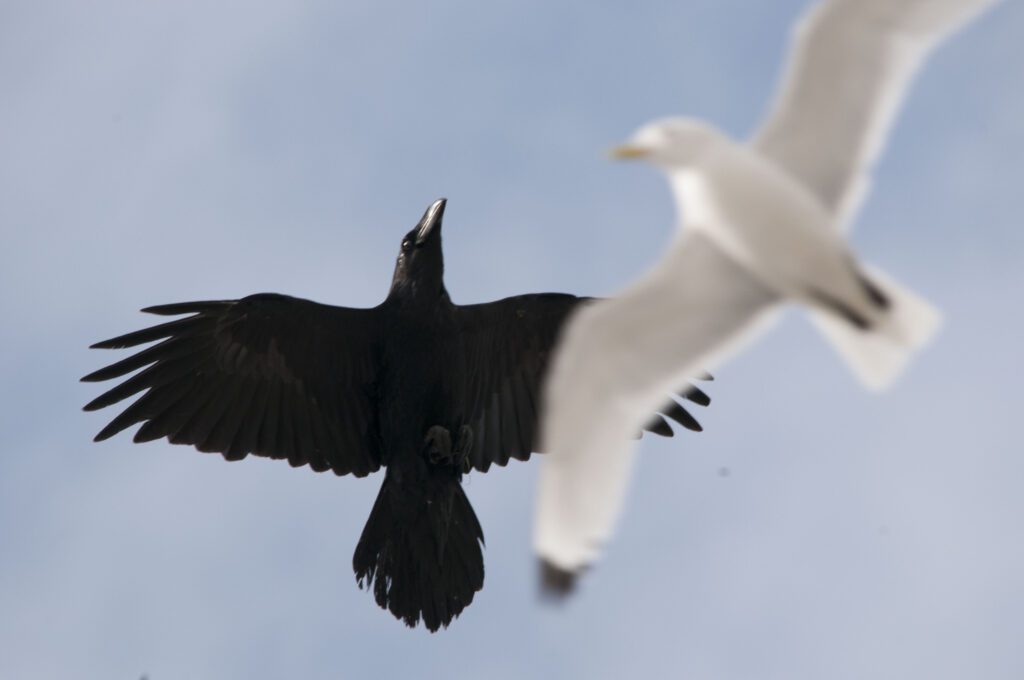Detailed studies of lesser black-backed gull nest predation
Although increases in egg and chick predation has been registered among some of the seabird populations monitored in the SEAPOP programme, the causes and effects of the predation have not been assessed in detail. In a project financed by SEAPOP, the effects of nest predation on the breeding success of northern lesser black-backed gulls (Larus fuscus fuscus) have been quantified on Helgelandskysten in northern Norway, including how predation influences the distribution of breeding birds, which nest predators are important and what effect nest predation has on the population.
The whole clutch is lost
Many seabird populations are declining, and the mechanisms behind the declines are not fully understood. In explanatory models, climate change and anthropogenic effects reducing food availability are often central elements, but other factors affecting reproduction and survival may have large impacts. One such factor is predation on eggs and chicks. Nest predation not only leads to a total reproduction failure for the afflicted pair in most cases, but may also cause problems at the population scale when large parts of the colony are predated over time.
Moves to escape the predators
The Horsvær archipelago on Sør-Helgeland has hosted the largest breeding concentration of northern lesser black-backed gulls in Norway, but the population has decreased severely over the last 18 years, from approximately 400 pairs in good years to around 200 pairs, distributed over nine sub-colonies. Although the Horsvær gulls breed both in the open and concealed in the vegetation, the breeding habitat does not seem to be of any significance for the breeding success. The SEAPOP studies show that the birds are generally distributed among the sub-colonies on the basis of breeding success, determined by nest predation in particular. On one occasion, a large and well-functioning sub-colony was abandoned after all the nests were predated. There was also a larger degree of emigration from sub-colonies where predation was high, and even though most (approx. 80 %) young birds recruited into the sub-colony where they were raised, they emigrated just as quickly if breeding failed.
The raven is the main culprit
The investigations revealed that the most important nest predator was the raven (Corvus corax). In years when ravens bred at Horsvær, nest predation was very high, and almost no lesser black-backed gull chicks fledged. The adult ravens and their young operated in flocks, and the lesser black-backed gulls had no chance to defend their nests. Conversely, in years with no breeding ravens, predation was minimal. Over time, the Horsvær population of northern lesser black-backed gulls decreased as a result of predation, which was not the case in a neighbouring sub-colony with no breeding ravens.
A threatening combination
As part of the project, the researchers analysed the effect of nest predation on the whole population of lesser black-backed gulls under different environmental conditions. It turned out that nest predation was the most important stressor, and the effect of predation was amplified by poor breeding conditions, i.e., in years with reduced access to food. All in all, the combination of these two factors could threaten the existence of the whole colony of northern lesser black-backed gulls at Horsvær.
The project resulted in three publications:
- To hide or not to hide: nesting habitat dynamics in a threatened gull
- Reproductive success of threatened northern lesser black-backed gulls (Larus fuscus fuscus) in relation to nest predation by ravens (Corvus corax)
- Multiple stressors: negative effects of egg predation on the viability of a threatened gull in different environmental conditions

Photo © Geir Helge Systad

Photo © Jan Ove Bustnes
Contact person: Jan Ove Bustnes, NINA
